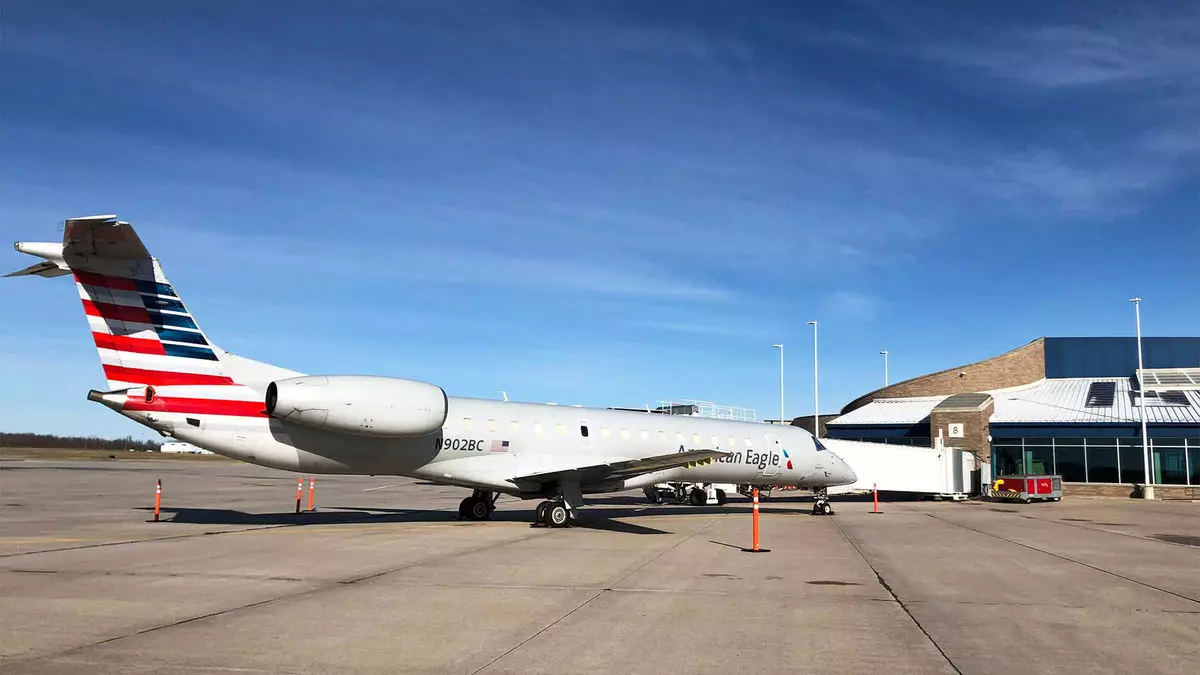In the landscape of American aviation, small airports often face unique challenges, especially in the wake of a global pandemic that has severely disrupted travel patterns and airline operations. Appleton Airport in northeastern Wisconsin, like many smaller airports across the country, experienced a notable downturn in air service as major carriers adjusted their fleets and schedules. However, recent developments suggest a turning tide for Appleton, as it witnesses an uplifting resurgence in air travel connectivity, bolstered by strategic airline moves.
The turbulence faced by regional air travel can largely be attributed to a shortage of pilots, which led to decreased operations by major airlines such as American, Delta, and United. This situation appeared more pronounced after the pandemic, when major airlines needed to refocus their resources to navigate changed market conditions. Yet, as pilot hiring has begun to recover, regions like Appleton are finding new opportunities for growth.
In June, a significant milestone occurred for Appleton Airport: American Airlines launched the airport’s inaugural route to Dallas-Fort Worth, utilizing an American Eagle regional jet. This daily service is not merely a restoration of diminished flights; it marks an essential expansion of options for travelers in the area. Over the past year, American Airlines has introduced new routes, including a revived service to Charlotte, which together broaden the horizon of travel options for local business and leisure travelers.
The beneficial impact of this expansion is evident in the numbers. From October 2021 to October 2023, Appleton experienced a dramatic 31% decrease in major airline operations. However, with the recent enhancements by American, Delta, and United, flight counts have rebounded remarkably, reaching 92% of pre-downturn figures. More impressively, seat availability from these major airlines has surpassed pre-pandemic levels by nearly 6%, thanks in part to the implementation of larger regional aircraft. This capacity increase reflects a significant shift in both strategy and demand in the airport’s service offerings.
The ripple effect of enhanced air service is profound for the roughly 250,000 residents of the Appleton metro area. Jesse Funk, the air service and business development manager at Appleton Airport, highlighted how improved air connectivity has simplified travel for both business professionals and families. He stated, “It just makes things so much easier for the business travelers to get where they want to go.” In a digitally driven world, time efficiency in travel has become paramount, and the recent enhancements have made traveling far more accessible, with several added flight options allowing for greater flexibility.
Moreover, increased competition among airlines tends to benefit consumers by keeping fare prices competitive or at least stable. This is especially important in a smaller market where only a limited number of carriers are typically available. The situation in Appleton exemplifies a broader trend observed in various regional airports as airlines recover from staffing shortages and ramp up services once again.
The revival of air travel in small to medium-sized communities like Appleton is not an isolated occurrence. Data indicates a gradual recovery across the board, with American Airlines currently offering 14.9% more regional flights than a year ago, while United and Delta have also ramped up their service offerings. The sentiment within the industry is optimistic, as leaders like Delta’s president Glen Hauenstein anticipate a return to pre-pandemic capacity by next summer.
This upturn is also coupled with the strategic plans of the major airlines to invest in expanding their regional fleets, essential for meeting the growing demand for travel. For instance, the addition of more aircraft through agreements with regional operators and resumed services points to a reinvigoration of the regional airline sector. Nevertheless, despite these positive trends, there remains a cautionary note regarding the long-term sustainability of regional services, particularly concerning potential pilot shortages in light of evolving industry dynamics.
The Road Ahead for Appleton Airport
While Appleton Airport celebrates its recent successes, Funk remains realistic, emphasizing the need for continuous efforts to enhance air service further. “We’re happy but still looking for more,” he noted, recognizing that while immediate gains are commendable, the imperative for future development persists. It’s clear that as Appleton Airport navigates this transitional phase, a keen focus on sustainability and expansion will be critical in maintaining its momentum.
In this age of uncertainty, the revival of regional air travel at Appleton Airport serves as a beacon of hope. The rebound indicates not only a recovery for the airline industry but also a reassessment of the essential role that smaller airports play in connecting communities and facilitating vital economic activities. As airline partnerships flourish and demand increases, the landscape of regional air service will be reshaped, promising a bright future for air travel in Appleton and beyond.

